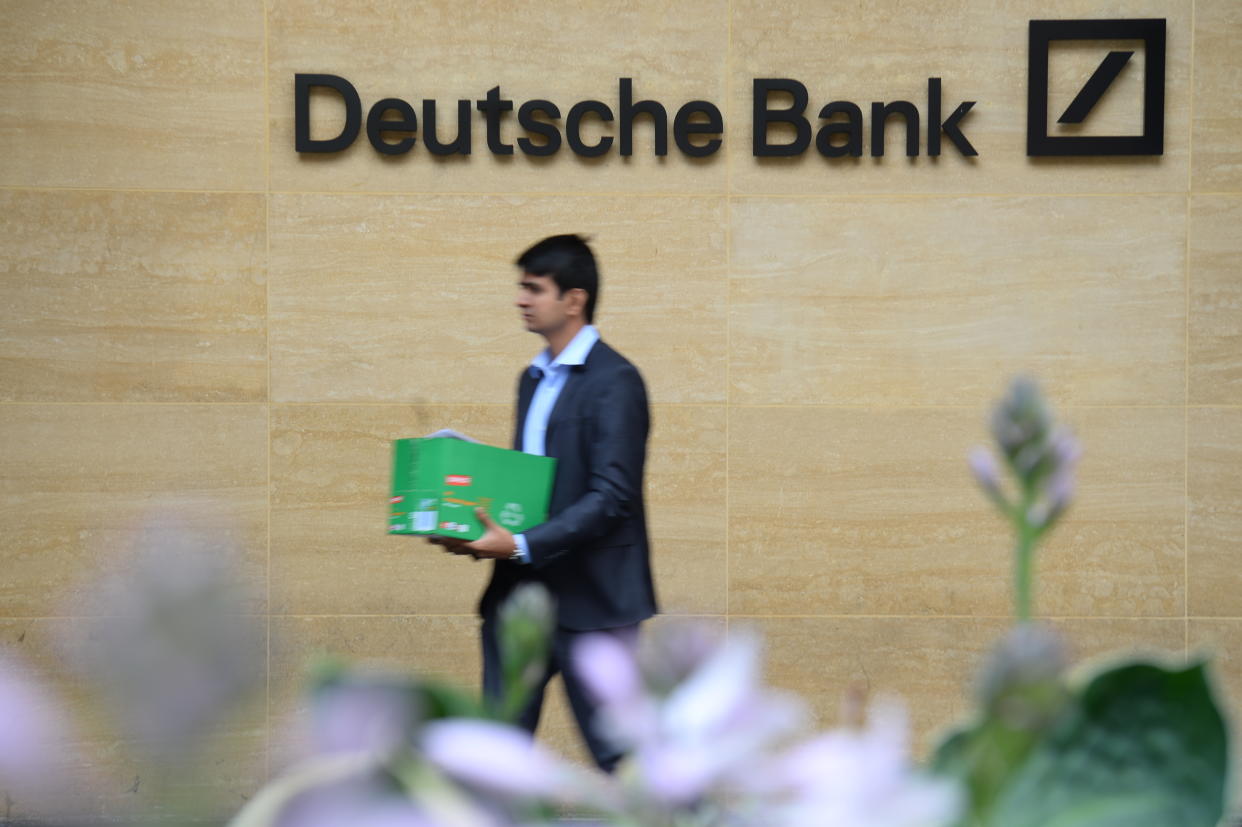Tens of thousands of bank jobs axed in 2019 — and more pain to come

Tens of thousands of jobs have been lost across Europe’s investment banks this year, as lenders get to grips with stricter research rules, low or negative interest rates, and depressed market activity.
Italy’s UniCredit (UCG.MI) capped a bleak year for banks by announcing 8,000 job cuts earlier this month. It means over 75,000 job cuts have announced at banks around the world this year, according to Bloomberg, with more than 60,000 falling in Europe.
Notable layoffs include:
HSBC saying in August that up to 4,700 staff could be let go
Barclays confirming in August that 3,000 staff were cut as part of a cost-cutting push
Despite the sweeping cuts, analysts fear 2020 could be another difficult year. Analysts at Barclays told clients that European banks face “a number of uncertainties going into 2020.”
‘The squeezed middle’
The 2019 jobs cull has been driven by a lethal combination of falling revenues, increased competition, and costly new regulation.
“Although it’s been a bull market, there’s not been a lot of primary activity and that’s made it very hard to pay the bills,” Russ Mould, investment director at stockbroker AJ Bell, told Yahoo Finance UK.
The US-China trade war that has rumbled on throughout 2019 has chilled global market activity. Fee revenue across banks dropped 8% year-on-year, according to data provider Refinitiv.
The downturn has been felt particularly sharply in Europe, where Refinitiv data shows revenue collapsed by 15% compared to 2018.
The number of European IPOs dropped by 46% this year according to PwC. On the trading floors, low and negative interest rates have disrupted strategies and political uncertainty has left many clients sitting on the sidelines. In corporate departments, unusually low interest rates have eroded margins in lending.

Competition in Europe is also fierce. The top five investment banks in Europe are all bulge bracket American institutions, able to defend their market share with huge balance sheets. At the other end of the market, new boutiques such as Robey Warshaw have won a staggering amount of market share in M&A.
“You’ve got the squeezed middle — HSBC, Barclays — and they’re finding life tough,” said Mould.
HSBC (HSBA.L)’s ‘wallet’ share in Europe fell from 3.5% to 2.9% over the last 12 months, according to Refinitiv. Although Barclays (BARC.L) has grown market share, investment bank revenue is down more than 10% year-over-year.
‘Winnowing out’
Another headwind is the growing burden of regulation. New research rules introduced by the EU last year have been particularly painful.
Banks traditionally gave research notes to clients for free, hoping the trading ideas contained within would encourage business. But new EU rules, called MiFID II, require banks to charge for research. The rules are intended to increase transparency around how banks make their money and came into force at the start of 2018.
“It’s focused buy-side minds on how much they value it because they’re now having to pay for it in an unbundled fashion and as a result there is an inevitable winnowing out,” Mould said.
Away from regulation, more and more processes are being transformed using technology. Banks like Goldman Sachs are moving towards a self service model that allows clients to price products through a digital portal rather than speaking to a banker. That is likely to mean fewer jobs.
All of these factors — rising regulation costs, declining market activity, and a sector-wide shift to technology — have created a relentless downward pressure on costs.
“Deutsche Bank has its own very specific issues, Macquarie has just pulled out of Europe because it’s retrenching, [interim CEO Noel] Quinn’s just getting stuck in at HSBC,” Mould said. “A lot of it’s case by case, but then encompassed within the broader themes.”
‘If things continue, you’d be concerned’
The question for staff left at the big banks is whether the blood letting will continue into 2020.
“If you get an M&A boom, an equity boom, that would help enormously. Everybody gets well,” Mould said. “But if things continue where they are, you’d be concerned.”
Credit rating agency Fitch warned in a recent note that the squeeze on banks would likely continue next year.
“Slower economic growth is likely to lead to an increase in loan-impairment charges from cyclical lows, exacerbating pressure on profitability,” Fitch analysts wrote.
Analysts at Barclays agreed, saying trade tensions, “regional politics, trade tensions, sluggish GDP growth and expectations of persistently low or negative interest rates [are] likely to weigh on the revenue outlook.”
“We also expect a step up in capital requirements from Basel 3 finalisation and other regulations,” the Barclays team wrote.
“In this environment self-help along the lines of cost control, restructuring, and defending profitable niches is key.”
After a brutal 2019, it could be another painful year ahead for bankers across Europe.

